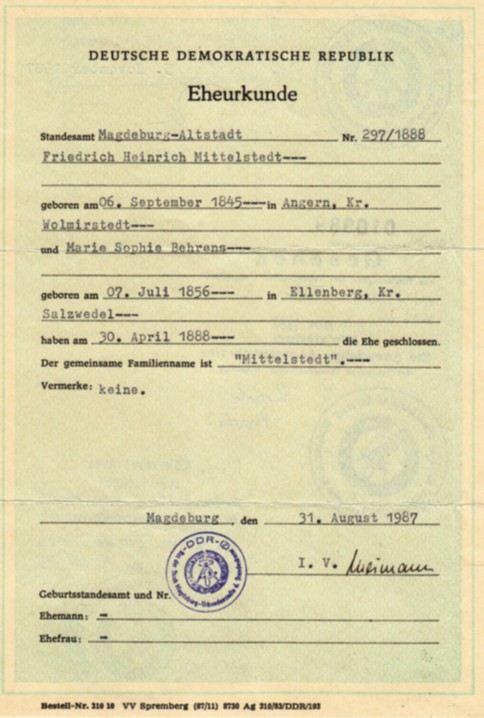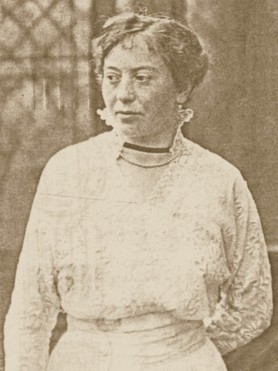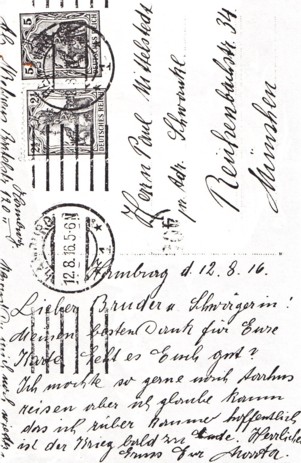Friedrich Heinrich Mittelstedt was born in Angern on September 6, 1845, moved to Magdeburg, and died October 6, 1906.
His grandfather was a "Kossat" i.e. a small-farm owner. His father Johann Heinrich (1814-1886) was a shoe-maker/manufacturer and a musician. His mother (1818-1874 had the birth name "Loewe" (her father was Christian Heinrich Loewe).
Friedrich Heinrich appears to have been an only child. His parents married on November 14 1844 and Friedrich Heinrich was born the following year on September 6. The entry recording his mother's death in the church records says: "Survived by her husband and adult son."
About 1875 Friedrich Heinrich had a son from a first marriage named Heinrich.
After that he had nine further children with his second wife Marie Sophia Behrens, his housekeeper, whom he married on April 30, 1888. His address at this time was Blumenthalstrasse Nr, 4, Magdeburg. His occupation was "Bautechniker" (building-site engineer) or "Baumeister" (master-builder) probably with the Reichsbahn, the Railways.
Marriage Certificate
Marie Sophia lived July 7 1856 - June 12 1913. Her death was announced in a newspaper dated June 14, 1913:
Friedrich Heinrich had ten children, the first with another woman before marrying Marie, followed by nine with Marie:
1 Heinrich (Son from the previous marriage)
2 Alma
3 Paul
3 Mariechen
5 Hans
6 Otto
7 Otto Walter (and descendants Walter Robert; Käte; Bernhard; Gilda)
8 Heinrich
9 Roeschen — Photo
10 Max Arthur Adolf (and descendants Werner Max; Illona; Hasso; Werner; Daniel; Eila)
Descendants of Friedrich Heinrich sometimes referred to him as "Friedrich" but usually as "Heinrich". It was common in the 19th century for parents to give several sons the same first name but different second names. Sons were known by their second name — my grandfather "Otto Walter", for example, was always known as "Walter".
Friedrich Heinrich lived his early life in Angern and moved to Magdeburg. According to family tradition he was wealthy but lost much of his wealth in the currency reform of 1871 when the Mark replaced the Gulden. German unification (1871), currency reform, industrialization and population-growth led to an economic boom especially in railway-construction and heavy industry. But in 1873-1874 there was an economic crash and 160 of 857 recently-formed companies failed. Friedrich Heinrich had invested badly during the boom years and ended up much poorer — he retained one house in Magdeburg out of his previous three houses.
Around 1898 Friedrich Heinrich went broke paying debts incurred by his first son. As a result he distributed his children among the relatives of his wife to be raised by them. On 6/19/1906 he committed suicide by shooting himself.
Marie had at least three sisters who took in and raised some of her children when Friedrich Heinrich could no longer afford them. "Tante" Teissen (i.e. Aunt Teissen), for example, raised Roeschen, and Anna raised Otto Walter.
Marie Behrens also had a daughter, prior to her marriage with Friedrich Heinrich, whom I knew as "Tante Marta" i.e. Aunt Marta (1879-1971). This 1916 picture of her is on a postcard she send to Paul Mittelstedt.
Mr Paul Mittelstedt
and sister in law
Reuhenbach Str.
Munich
Hamburg date 12.8.16
Dear brother and sister in law!
Thank you so much for your card. Are you both well?
I would so much like to take a trip to Aarhus [=Arhus, Denmark's 2nd largest city] but I doubt that I'd be able to go over to there.
Hopefully the war will soon come to an end.
Sincere greetings
Your Marta
Sender Behrens, Bartel Str. Hamburg
Will you also be travelling again?




